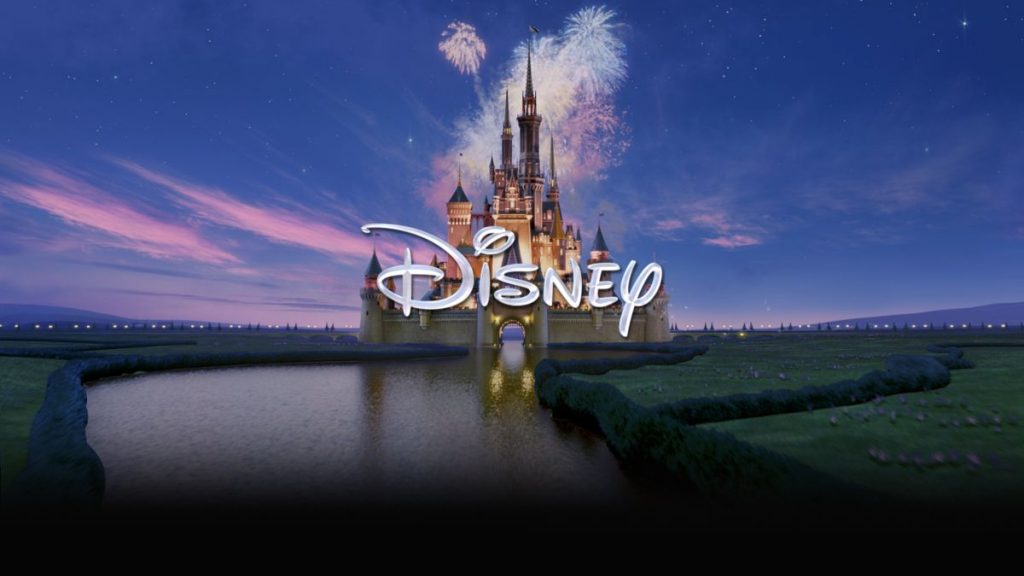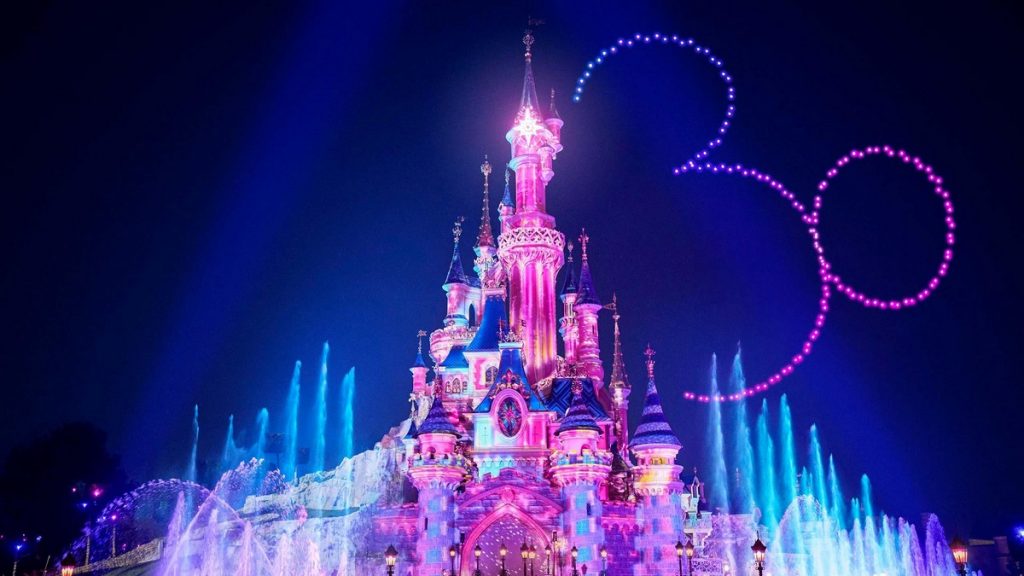The Marketing mix of Walt Disney analyses the 4Ps of Walt Disney, including the Product, Price, Place, and Promotions. The Walt Disney, marketing mix element, describes the famous Disney marketing secrets, business operations, and marketing communications mix that has helped the American multinational mass media company reach the desired heights in the media and entertainment industry.
Walt Disney’s marketing communications effectiveness has resulted in customer loyalty, the Disney company’s brand exposure, many business partners, and the company’s competitive performance in the international market.
A compelling marketing mix contributes to the brand success in the company’s target market by focusing on Disney’s business diversification activities, retail industries, marketing campaigns, company’s product mix, Disney’s theme parks, Disney’s characters, Disney Magic, Disney World, movie theaters, Disney stores, market-oriented and value-based pricing strategy, and promotional mix.
Table of Contents
Introduction: The Walt Disney Company
# The Walt Disney Company
- Origin Country: United States of America
- Founders: Walt Disney, Roy Oliver Disney
- Owners: The Vanguard Group (7.4%), BlackRock(6.2%)
- Founded: 1923
- Headquarters: Walt Disney Studios, Burbank, California, U.S.
- Employees in 2023: 220,000
- Annual Revenue in 2023: 84.415 billion USD
- Net Income in 2023: 3.320 billion USD
- Market Cap in 2023: 182.92 billion USD
- Company’s Brand Value in 2023: 57.06 billion USD
The Walt Disney Company is a renowned conglomerate associated with the mass media and entertainment industry. The company was formed as Disney Brothers Studio and operated under several names like Walt Disney Studio, then Walt Disney Productions, and lately The Walt Disney Company.
The American multinational mass media company is the market leader in the animation world after creating the world-famous Disney characters Mickey Mouse, Olaf, Rex, Donald Duck, etc. Mickey Mouse was the brand’s first sound cartoon and Disney character and later became the company’s mascot.
The Walt Disney Company has been ranked 53rd on the Fortune 500 List 2022 of “Biggest Companies in US by Revenues” and has won 135 Academy Awards. It was also ranked 17th in the Forbes list of World’s Most Valuable Brands 2021.
Walt Disney Product Strategy

The product mix of The Walt Disney Company, one of the largest and most well-known entertainment companies globally, is diverse and spans various segments.
The new Product Mix of Disney in 2024 is as follows (Source).
- Media Networks: This segment includes many broadcast, cable, radio, publishing, and digital businesses. It encompasses the ABC Television Network, Disney Channel, ESPN, and many other networks around the globe. It also includes television production operations and television distribution.
- Parks, Experiences, and Products: This segment consists of Disney’s theme parks and resorts, including Walt Disney World Resort in Florida, Disneyland Resort in California, Disneyland Paris, Hong Kong Disneyland Resort, and Shanghai Disney Resort. It also includes Disney Cruise Line, Disney Vacation Club, and other experiential ventures. The merchandise licensing, retail, and publishing businesses also fall under this category, producing and selling various Disney-themed products.
- Studio Entertainment: This segment covers the production and distribution of film and music. It includes Walt Disney Pictures, Pixar Animation Studios, Marvel Studios, Lucasfilm (responsible for the Star Wars franchise), and 20th Century Studios. This segment creates and distributes movies, music, and stage plays to consumers worldwide.
- Direct-to-Consumer & International (DTCI): This relatively new segment focuses on Disney’s direct-to-consumer streaming services, including Disney+ and ESPN+, and the company’s ownership stake in Hulu. It also encompasses all of Disney’s international media operations and channels.
Disney’s product mix reflects its strategy to diversify its offerings and revenue sources, leveraging its strong brand and extensive intellectual property portfolio across various entertainment and media platforms. This diversification allows Disney to tap into multiple markets, from traditional film and TV to digital streaming and theme parks, catering to various demographics and preferences worldwide.
Walt Disney Pricing Strategy
The Walt Disney Company employs a multifaceted pricing strategy that leverages its broad spectrum of products and services, catering to a diverse audience range. As a global leader in entertainment, Disney’s approach to pricing is as dynamic and innovative as its product offerings, incorporating elements of premium pricing, value-based pricing, dynamic pricing, and psychological pricing strategies. This approach maximizes revenue and market penetration and enhances brand loyalty and consumer satisfaction. Let’s delve into the specifics:
- Premium Pricing: Disney is synonymous with high-quality, unparalleled entertainment experiences. The company often employs a premium pricing strategy, particularly for its theme parks, resorts, and merchandise. This strategy is based on the perceived value of the Disney brand, which is considered superior in the entertainment industry. By pricing its products and services higher than some competitors, Disney reinforces its brand’s prestige and allure, attracting consumers willing to pay more for what they perceive as an exceptional product or experience.
- Value-Based Pricing: Understanding the vast array of its consumer base, Disney also implements value-based pricing strategies, particularly evident in its streaming services like Disney+ and ESPN+. This approach involves setting prices primarily on the perceived value to the customer rather than solely on cost. For example, Disney+ was launched at a competitive price point, offering vast content from Disney, Pixar, Marvel, Star Wars, and National Geographic, delivering significant value to subscribers and quickly garnering a massive subscriber base.
- Dynamic Pricing: In its theme parks, Disney has adopted dynamic pricing models that adjust prices based on demand, time of year, and other factors. This strategy helps to manage park attendance, optimizing the guest experience while maximizing revenue. Prices during peak times, such as holidays and summer, reflect the increased demand. Conversely, Disney offers lower prices during off-peak times, attracting guests who may prefer a less crowded experience at a reduced cost.
- Psychological Pricing: Disney also employs psychological pricing strategies to make its products and services more attractive. For instance, pricing just below a round number (e.g., $99.99 instead of $100) makes the price seem significantly lower, encouraging purchase decisions. Additionally, Disney creates perceived value through bundled offerings, such as park tickets with meal plans or merchandise bundles, making consumers feel they are getting more for their money.
- Segmented Pricing: Given its wide range of products and services, Disney uses segmented pricing to cater to different market segments. For example, there are various ticket options for its theme parks, including single-day tickets, multi-day tickets, park hopper tickets, and annual passes, each priced differently to attract different types of consumers. Similarly, Disney’s streaming services offer various plans, including bundles with other services, to appeal to consumer preferences and willingness to pay.
In summary, The Walt Disney Company’s pricing strategy is a sophisticated blend of different methodologies designed to cater to its diverse audience while maximizing profitability. By continuously adapting its pricing strategies based on consumer behavior, market trends, and technological advancements, Disney remains at the forefront of the global entertainment industry, sustaining its legacy and appeal across generations.
Walt Disney Place Strategy
The marketing mix of Walt Disney has created place and distribution strategies that are based on its vast product and service offerings. The company must allocate goods and services to customers and strategically place goods in the global market.
Here’s Walt Disney’s place strategy.
- Global Presence in Theme Parks and Resorts: Disney has strategically located its theme parks and resorts in key global markets, including the United States, Europe, Asia, and soon, the Middle East, ensuring accessibility to a broad international audience and capitalizing on diverse regional markets.
- Expansive Retail Distribution: Disney merchandise is available through a wide range of channels, including Disney stores, online platforms, and third-party retailers, ensuring that Disney-branded products are accessible worldwide, catering to fans of all ages.
- Direct-to-Consumer Streaming Services: With the launch of Disney+, ESPN+, and its stake in Hulu, Disney has embraced digital transformation, providing direct access to its vast content to consumers globally, bypassing traditional distribution channels.
- Strategic Partnerships and Collaborations: Disney collaborates with various businesses and brands to place its products and experiences in front of broader audiences, such as collaborations with major retailers, technology companies, and other media entities.
- Localized Content and Experiences: Recognizing the importance of cultural differences, Disney tailors its content and park experiences to fit local tastes and preferences in international markets, enhancing relevance and appeal to local audiences while maintaining its brand integrity.
Walt Disney Promotional Strategy

The Walt Disney Company is a globally renowned company that uses a multi-channel strategy for promoting its products and increasing customer loyalty. Disney marketing campaigns have been created specifically for the promotional mix of Walt Disney so that Disney fans can connect viably with the brand.
The promotional tools used in the multi-channel strategy of the company include:
- Advertising Through Traditional Media: The promotion mix of Walt Disney uses print media and digital media tools like television, radio, newspaper, magazines, pamphlets, flyers, billboards, and hoardings to advertise the products and services in the market.
- Sales Promotion: The Walt Disney Company takes sales promotion very seriously and offers incentives like coupons, discounts, free rides, and free merchandise occasionally to lure in new customers and maintain the existing customer base.
- Social Media Platforms: The Walt Disney Company utilizes social media platforms like Facebook, Twitter, Instagram, and YouTube to display meaningful campaigns and connect with customers.
- Direct Selling: The promotion mix of Walt Disney includes direct selling of products and services like toys, merchandise, theater tickets, etc., to the customers.
- Community Development Programs: The Walt Disney Company realizes how important it is for the company to give back to society. It is part of community development programs and encourages employees to participate and contribute. The brand spent $140 million in 2022 on programs working diligently for underprivileged communities. The brand hired 12,500 veterans via the Heroes Work Here program in 2022.
Some Recent Video ads and Print ads for Walt Disney are:
Liked this post? Check out the complete series on Marketing Mix